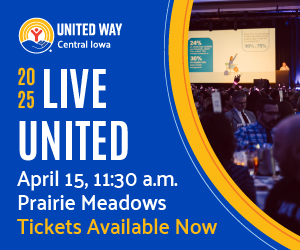Kevin Wingert of American Retirement Systems
By Steve Dinnen
Required minimum distributions — RMDs — from your retirement savings account are a fact of life. Once they kick in, you can’t avoid them. But you can certainly use them to your advantage to help minimize your taxes.
Kevin Wingert, founder of American Retirement Systems in Urbandale, has counseled many people about using RMD money once it lands in their lap. One of his favorite strategies is putting the money in a Roth IRA. “I’m a big fan of Roths,” he said. “You can use it to build tax-free wealth.”
For instance, you can take traditional IRA funds and convert them to a Roth account. Roth earnings are tax-free. (You do have to pay taxes at the time of the conversion, but future growth in the Roth IRA is tax-free). This strategy usually works best after retirement, when your income may be lower than when you were working, but before you reach RMD age. Since both RMDs and Roth conversions create ordinary income, you’ll want to manage your income so you don’t climb into a higher tax bracket. For federal taxes, the sweet spot in most cases is in the 24% bracket or lower tax brackets for couples.
In one situation, Wingert worked with a woman who wanted long-term care insurance. They used an RMD to buy an insurance policy that had a component of long-term care insurance. So if she ends up needing it, the insurance policy would provide around $40,000 yearly to help pay for long-term care — basically, an advance on her death benefit, Wingert said. And if she doesn’t use the long-term care insurance, her children will get the proceeds of the insurance policy, tax free.
Another insurance idea: Wingert worked with one client who had a taxable IRA valued at $2.4 million. When the man dies, his children will inherit that IRA, along with a tax bill of roughly $800,000. But he can buy a life insurance policy with RMD dollars that will pay out a big enough benefit to handle that tax bill.
And of course, you can always give money away to lessen your RMD. You can donate up to $100,000 to qualifying charities and have it lower your RMD base for future years. You must be at least 70 and a half years old to do a qualified charitable distribution, and the funds must go directly from your IRA custodian to the charity.
As always, make sure to consult your tax professional for details.











